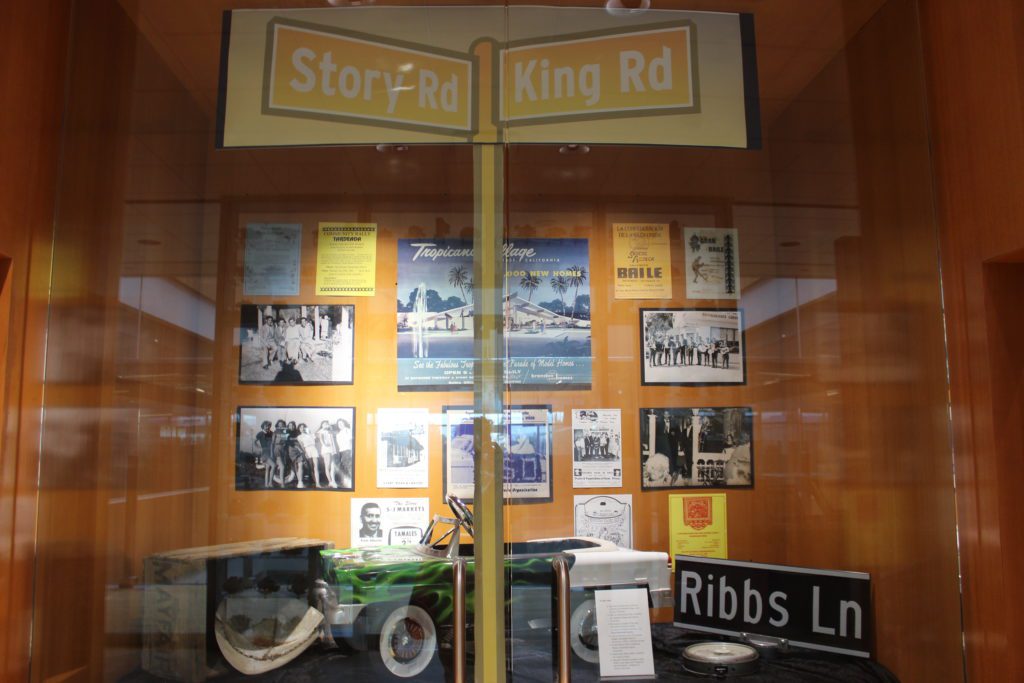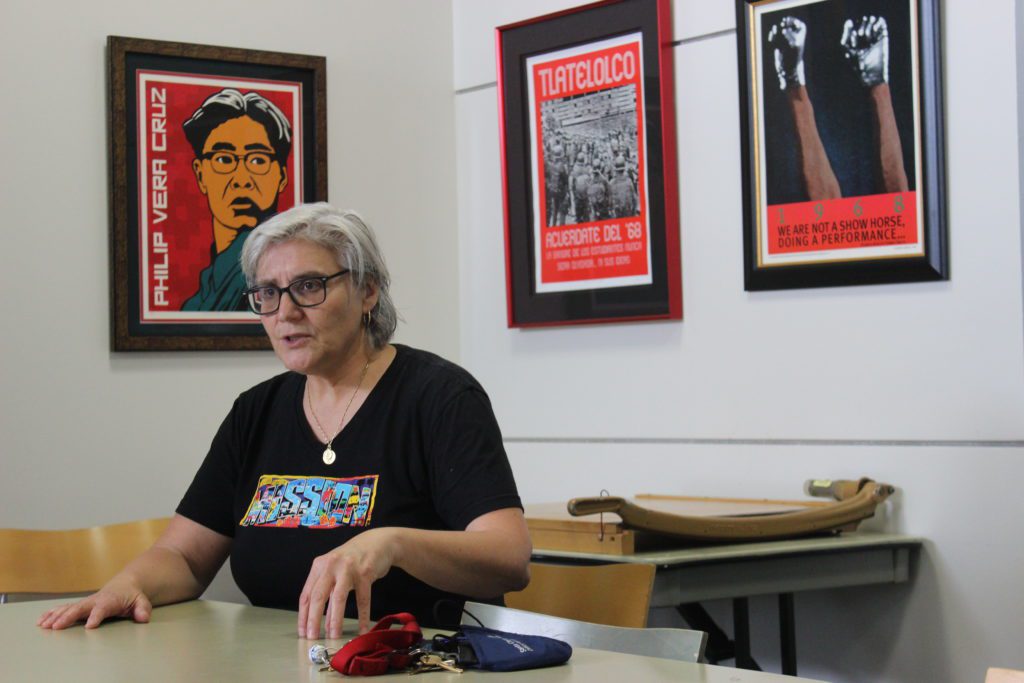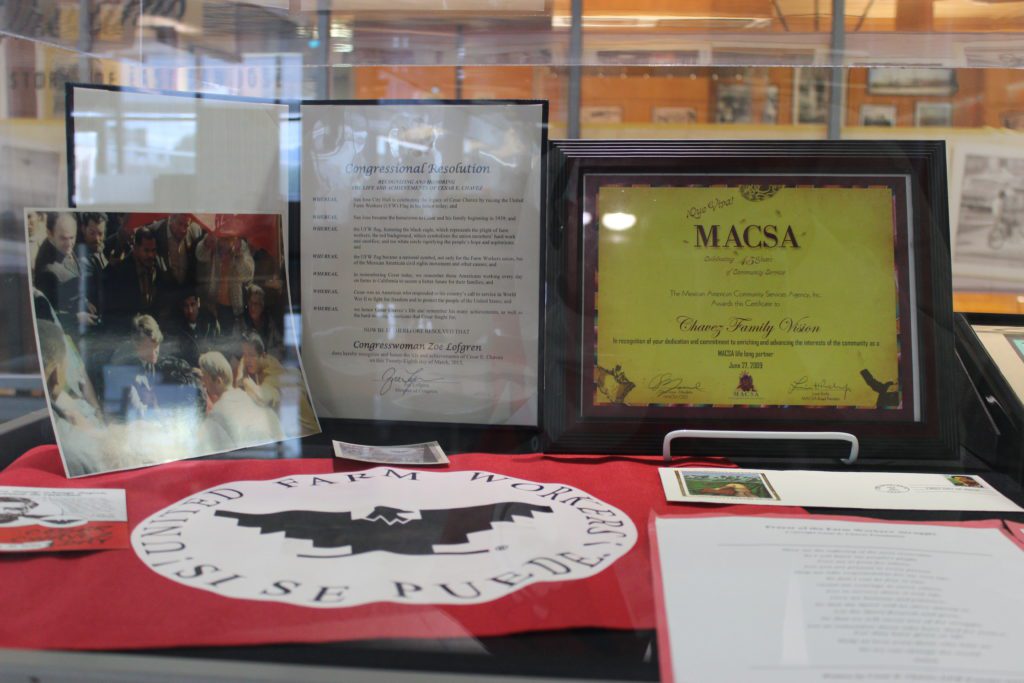Until this month, East San Jose’s history was a gaping hole in the city’s local libraries.
The community, often overlooked and neglected, did not see itself at all reflected in Silicon Valley’s history books.
That all changed with a single question.
A San Jose State student was looking to learn more about the city’s lowriding culture and asked an on-campus librarian for copies of Lowrider Magazine—a national publication started by three SJSU students who grew up on the Eastside.
The Martin Luther King Jr. Library had very little.
“Just like the Eastside was neglected, so was the history,” Library Clerk Estella Inda told San José Spotlight. “I couldn’t tell you why that is, but it’s a loss for San Jose.”

Inda, who’s mother worked to improve conditions in her East San Jose neighborhood, turned to the community to collect the oral history of lowriding culture and salvage some old magazines—eventually using the info for a major library exhibit in 2018. But as she dug through that part of East San Jose’s history, Inda and other librarians realized there was a huge gap in their collection.
The stories of the Eastside from the 1950s to now—the arts, theater, culture and activism—were not properly documented. They weren’t captured by the university, local news or historians, Inda said. And if they aren’t recorded now, while many of those residents involved are still alive, those stories could disappear.
“We don’t know what happened in the past, but it’s part of those things we can fix now,” Inda said. “It’s important that we do because there are already so many people I would’ve loved to talk to—Esther Medina, Sofia Mendoza—they’re no longer here. But there’s still others that worked with them.”
So began an almost anthropological search to tell the untold stories of East San Jose.

Painting a different story
On July 1, the Dr. Martin Luther King Jr. Library in downtown San Jose launched “Eastside Dreams: The Untold Story of East San José.” The free exhibit will run until Sept. 24 on the fifth floor.
Street signs of major Eastside streets like McKee and King roads line the exhibit’s ceilings, guiding visitors to the section on lowriders and through a collection of photos and posters for community events and protests. The special collections room highlights prominent community leaders and maps of how East San Jose has changed.

Darlene Tenes, founder of the Farmworker Caravan, is one Eastside leader featured along with her mother Lily Tenes. She said she’s honored to have her family recognized, but even more ecstatic to see East San Jose depicted accurately.
“People just dismiss the Eastside,” Tenes told San José Spotlight. “They don’t realize all the history, the tradition. That it is filled with good people. That crime is actually not concentrated in the Eastside… and that most of the wealth used to come from here, that’s why the city’s first country club is up here too.”
East San Jose is full of generations of activists, like Cesar Chavez’s family—whose sister led the Community Service Organization, a prominent Latino civil rights organization. The exhibit highlights community leaders born out of the organization who fought for the city to finally open a hospital on the Eastside in 1965.
A collection of documents tell the story of an effort, started by activist Sofia Mendoza, to monitor interactions between police and residents to combat police brutality in the early 1970s. There’s also the Ribbs brothers, the first African American business owners who have a street named after them.
In telling these extraordinary stories, leaders and historians hope to shed harmful narratives and stereotypes about East San Jose—and instead elevate the rich cultural history that’s been whitewashed, glossed over or replaced by a shiny image of a tech-driven Silicon Valley.
“It paints a different story of the Eastside,” Inda told San José Spotlight. “It is not what it has been portrayed to be—the worst part of town. It’s families, it’s multigenerational homes, it’s artists and activists.”

A ‘potluck’ of artifacts
Inda and other librarians talked to hundreds of residents—some well known and others unaware of the significance of their work—to tell the stories of East San Jose and build out the collection. They conducted interviews and asked for artifacts like photos, protest posters, event flyers and anything else to visually tell the story of the time.
“We found that this was not just about Mexican Americans or Chicanos, this was a diverse community of individuals that wanted to work towards the betterment of voice,” Director of Africana, Asian American, Chicano, & Native American Studies Center (AAACNA) Kathryn Blackmer Reyes told San José Spotlight.

Kathy Chavez Napoli, one of the few Native Americans to run for San Jose City Council in 2000, donated photos from her childhood.
State Sen. Dave Cortese, whose family worked in East San Jose orchards before turning to politics, donated items like a hard hat from the family farm, awards and photos. Members of the Black Berets for Justice and the Chicano Pinto Union provided posters they used to organize.
“Eastside has been redlined and stigmatized for years, almost as if it’s a non-contributor, or somehow a drag on our metropolitan area,” Cortese said. “The exhibit shows that not only has it not been a drag, it’s perhaps been the impetus for innovative global leadership.”

Inda and Reyes hope residents who visit the exhibit gain a new perspective on East San Jose.
“We know we are going to get criticism for missing some stories,” Reyes said. “But that is a good thing because this is a living, breathing exhibit that we want residents to contribute to, to capture our history. This is not just East San Jose’s history—but all of San Jose.”
Contact Jana Kadah at [email protected] or @Jana_Kadah on Twitter.



Leave a Reply
You must be logged in to post a comment.